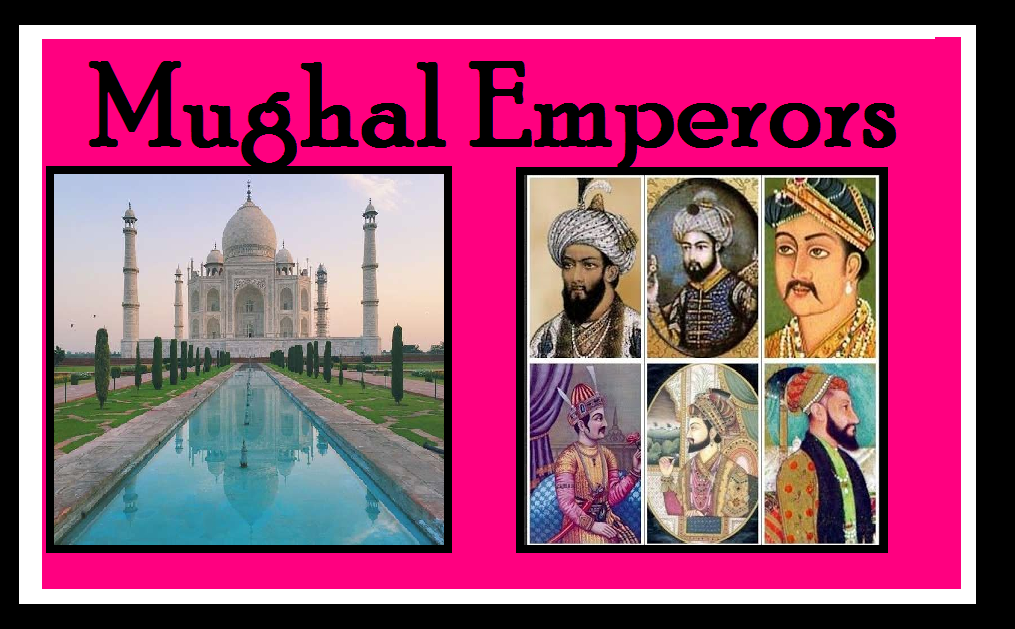Mughal Emperors
For All History Study Materials PDF – Click Here
For All Subject Study Materials – Click Here
The Mughal emperors, from the early 16th century to the early 18th century, built and ruled the Mughal Empire on the Indian subcontinent, mainly corresponding to the modern countries of India, Pakistan, Afghanistan and Bangladesh. The Mughals were a branch of the Timurid dynasty of Turco-Mongol origin from Central Asia.
The Mughals lived and reigned in India from 1526 to 1858 AD. Their dynasty was the greatest, richest and longest-lasting Muslim dynasty to rule India. This dynasty produced the finest and most elegant arts and architecture in the history of Muslim dynasties.
Babur Interest in literature, art, music and gardening. Jahangir Mughal painting reached a high level of elegance and richness during his reign.
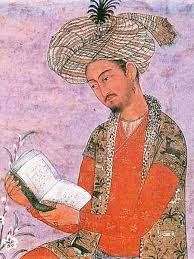
Majesty king & Reign Year:
| Titular Name | Birth Name | Birth | Reign | Death | Age | |
|---|---|---|---|---|---|---|
| Bābur | Zahir-ud-din Muhammad | 23 February 1483, | 1 April 1526 – 26 December 1530 | 26 December 1530 | 47 | |
| Humayun | Nasir-ud-din Muhammad Humayun | 17 March 1508 | 26 December 1530– 17 May 1540 | 27 January 1556 | 48 | |
| 22 February 1555 - 27 January 1556 | ||||||
| Akbar-i-Azam | Jalal-ud-din Muhammad | 14 October 1542 | 27 January 1556 – 27 October 1605 | 27 October 1605 | 63 | |
| Jahangir | Nur-ud-din Muhammad Salim | 20 September 1569 | 15 October 1605 – 8 October 1627 | 28 October 1627 | 58 | |
| Shah-Jahan | Shahab-ud-din Muhammad Khurram | 5 January 1592 | 8 November 1627 – 2 August 1658 | 22 January 1666 | 74 | |
| Alamgir I | Muhy-ud-din Muhammad Aurangzeb | 4 November 1618 | 31 July 1658 – 3 March 1707 | 3 March 1707 | 88 | |
| Bahadur Shah | Qutb ud-Din Muhammad Mu'azzam Shah Alam | 14 October 1643 | 19 June 1708 – 27 February 1712 | 27 February 1712 | 68 | |
| Jahandar Shah | Ma'az-ud-Din Jahandar Shah Bahadur | 9 May 1661 | 27 February 1712 – 11 February 1713 | 12 February 1713 | 51 | |
| Farrukhsiyar | Farrukhsiyar | 20 August 1685 | 11 January 1713 – 28 February 1719 | 29 April 1719 | 33 | |
| Rafi ud-Darajat | Rafi ud-Darajat | 30 November 1699 | 28 February – 6 June 1719 | 9 June 1719 | 19 | |
| Shah Jahan II | Rafi ud-Daulah | June 1696 | 6 June 1719 – 19 September 1719 | 19 September 1719 | 23 | |
| Muhammad Shah | Roshan Akhtar Bahadur | 17 August 1702 | 27 September 1719 – 26 April 1748 | 26 April 1748 | 45 | |
| Ahmad Shah Bahadur | Ahmad Shah Bahadur | 23 December 1725 | 26 April 1748 – 2 June 1754 | 1 January 1775 | 49 | |
| Alamgir II | Aziz-ud-din | 6 June 1699 | 2 June 1754 – 29 November 1759 | 29 November 1759 | 60 | |
| Shah Jahan III | Muhi-ul-millat | 1711 | 10 December 1759 – 10 October 1760 | 1772 (aged 60–61) | 61 | |
| Shah Alam II | Ali Gauhar | 25 June 1728 | 24 December 1759 – 19 November 1806 | 19 November 1806 (aged 78) | 78 | |
| Akbar Shah II | Mirza Akbar | 22 April 1760 | 19 November 1806 – 28 September 1837 | 28 September 1837 | 77 | |
| Bahadur Shah II | Abu Zafar Sirajuddin Muhammad Bahadur Shah Zafa | 24 October 1775 | 28 September 1837 – 23 September 1857 | 7 November 1862 | 87 |
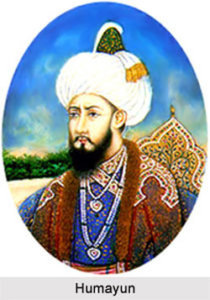
Administrative Reforms:
Akbar combated those trends by instituting comprehensive reforms that involved two fundamental changes.
- First, every officer was, at least in principle, appointed and promoted by the emperor instead of by his immediate superior.
- Second, the traditional distinction between the nobility of the sword and that of the pen was abolished:
- civil administrators were assigned military ranks, thus becoming as dependent on the emperor as army officers.

- Achieve: During his reign, the Mughal Empire extended to most of the Indian subcontinent, stretching from the Himalayas in the north to the Vindhyas in the south and Hindukush in the north-west to Brahmaputra River in the east.
- He annulled the special tax payable by Hindus for making pilgrimages in 1563 and completely abolished the jizya, or the annual tax, paid by non-Muslims in 1564, thus earning respect from his subjects.
- In 1569, he established a new capital west of Agra to celebrate his victory over Chittorgarh and Ranthambore, which was named Fatehpur Sikri (‘City of Victory’)
- During Aurangzeb’s reign many Indians converted to Islam.
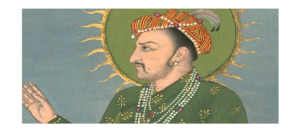
In Aurangazep Administration:
- When it comes to the administration of the empire, Aurangzeb was one of the best among the dynasty. The Mughal Empire was at its pinnacle of power under Aurangzeb and under its greatest length.
- The textile industry in the Mughal Empire emerged very firmly during the reign of the Mughal Emperor Aurangzeb and was particularly well noted by Francois Bernier, a French physician of the Mughal Emperor.
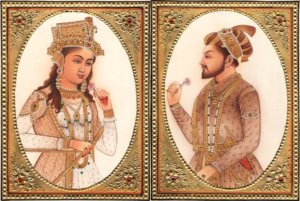
Cultures & Battles:
| King Name | Culture | Buit | Born | Death | Major Battles |
|---|---|---|---|---|---|
| Babur | Artistically, architecturally, a mixture of several cultures | Babri Mosque | Andijan | Agra | First Battle of Panipat and Battle of Khanwa |
| Humayun | Archiecture, Mughal Court culture, Persian art, architecture, language and literature | Humayun's tomb | Kabul | Delhi | Bairam Khan was successful in recapturing the capital for Humayun. |
| Akbar | Literature and art, | Agra Fort, the fort-city of Fatehpur Sikri, and the Buland Darwaza. | Umarkot | Agra | Battles Of Panipat and Second Battle Of Panipat |
| Jahangir | Persian culture in Mughal India | Shalimar Gardens in Kashmi, grand buildings and gardens in Lahore | Fatehpur Sikri | Lahore | War and peace with Mewar |
| Shah Jahan | Arts, crafts and architecture, | building palaces, mosques and gardens, including the Taj Mahal and Pearl Mosque | Lahore | Agra | War with Portuguese |
| Aurangzeb | Architecture | Moti (Pearl) Mosque built at Delhi, and the Badshahi (Imperial) Mosque built at Lahore. | Dhod, Malwa | Ahmednagar | Battle Of Samugarh |
Construction:
- Other constructions are the Red Fort also called the Delhi Fort or Lal Qila in Urdu, large sections of Agra Fort, the Jama Masjid, the Wazir Khan Mosque, the Moti Masjid, the Shalimar Gardens, sections of the Lahore Fort, the Mahabat Khan Mosque in Peshawar, the Jahangir mausoleum—his father’s tomb, the construction of which was overseen by his stepmother Nur Jahan and the Shahjahan Mosque
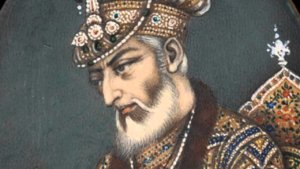
The Last Mughal Dynasty:
he last Mughal emperor, Bahadur Shah II, also known as Zafar, died in a British prison in Burma in 1862. As the last of the dynastic line that extended back to the sixteenth century, he had in his earlier years presided over a culturally sophisticated court, but as the British East India Company extended its control over more of India, his rule was clearly coming to an end.


